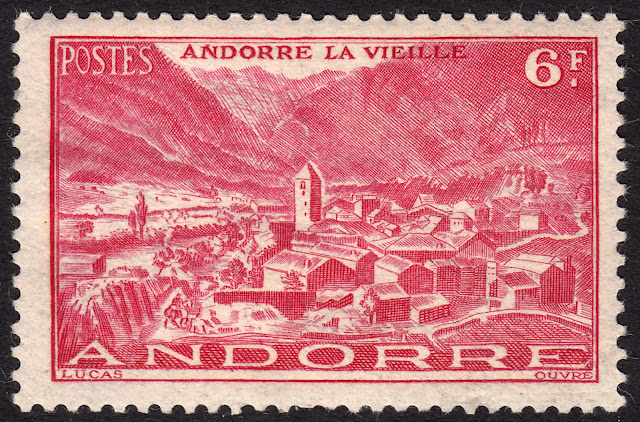It was the product of an inherited fortune. It employed an architect so obsessed with perfection, he razed whole sections of the building to the ground if they didn't meet with the approval of his hyper-critical eye. From the time of its construction in 1630 till 1905 when it was purchased by the state, it passed through the hands of no less than seven different families. It was even visited by Louis XIV in April 1651.
The Château de Maisons, which is now called Château de Maisons-Laffitte, is located in Maisons-Laffitte, a northwestern suburb of Paris, in the department of Yvelines, Île-de-France. Construction of the château was commissioned in 1630 by René de Longueil using the funds from a fortune inherited by his wife, Madeleine Boulenc de Crévecœur, who died six years later in 1636, never to see the fruits of her inheritance. By 1651 the château was complete, and it was in this year that it played host to King Louis XIV in April.
The Château de Maisons was designed by François Mansart in the French baroque architectural style. According to a pamphlet entitled, La Mansarade, the architect realised, after completing the construction of the first floor of the château, that he had committed an error in the plans So in a ludicrously egocentric move, he apparently razed everything built so far to the ground in order to start afresh! A tall tale? Who knows. But it certainly makes for a compelling story.
René de Longueil died in 1677, and the château remained in his family until 1732. Between that date and 1905 it passed through the hands of no less than seven families. Too many to list here. For a full history of the château, click HERE. In 1905, the State purchased the château in order to save it from demolition. Then in 1914 it was deemed an historical monument.
On 9 July, 1979, France issued a set of seven stamps in their ongoing Tourism series. To read the previous six parts, simply click on the relevant link. Part 1. Part 2. Part 3. Part 4. Part 5. Part 6. In this blog I'll take a close look at the final stamp in this series, the 0,45 value. This stamp depicts the Château de Maisons, which is now called Château de Maisons-Laffitte. This stamp was designed and engraved by Pierre Forget. Contrary to the stamp depicting an architectural monument that I studied in Part 6, I think this one is a true stunner. A far more interesting and visually appealing design than the stamp shown in Part 6. But that's just my humble opinion.
This stamp has, in my eyes, a somewhat Decaris-esque quality. If compared to Decaris' 1946 Luxembourg Palace design, we can see a marked similarity of line style.
Indeed, even the 1948 Saarland architectural stamp by Decaris bears some similarity, I feel.
Until next time...
***
The Château de Maisons, which is now called Château de Maisons-Laffitte, is located in Maisons-Laffitte, a northwestern suburb of Paris, in the department of Yvelines, Île-de-France. Construction of the château was commissioned in 1630 by René de Longueil using the funds from a fortune inherited by his wife, Madeleine Boulenc de Crévecœur, who died six years later in 1636, never to see the fruits of her inheritance. By 1651 the château was complete, and it was in this year that it played host to King Louis XIV in April.
The Château de Maisons was designed by François Mansart in the French baroque architectural style. According to a pamphlet entitled, La Mansarade, the architect realised, after completing the construction of the first floor of the château, that he had committed an error in the plans So in a ludicrously egocentric move, he apparently razed everything built so far to the ground in order to start afresh! A tall tale? Who knows. But it certainly makes for a compelling story.
René de Longueil died in 1677, and the château remained in his family until 1732. Between that date and 1905 it passed through the hands of no less than seven families. Too many to list here. For a full history of the château, click HERE. In 1905, the State purchased the château in order to save it from demolition. Then in 1914 it was deemed an historical monument.
***
On 9 July, 1979, France issued a set of seven stamps in their ongoing Tourism series. To read the previous six parts, simply click on the relevant link. Part 1. Part 2. Part 3. Part 4. Part 5. Part 6. In this blog I'll take a close look at the final stamp in this series, the 0,45 value. This stamp depicts the Château de Maisons, which is now called Château de Maisons-Laffitte. This stamp was designed and engraved by Pierre Forget. Contrary to the stamp depicting an architectural monument that I studied in Part 6, I think this one is a true stunner. A far more interesting and visually appealing design than the stamp shown in Part 6. But that's just my humble opinion.
This stamp has, in my eyes, a somewhat Decaris-esque quality. If compared to Decaris' 1946 Luxembourg Palace design, we can see a marked similarity of line style.
***
Indeed, even the 1948 Saarland architectural stamp by Decaris bears some similarity, I feel.
Until next time...




















